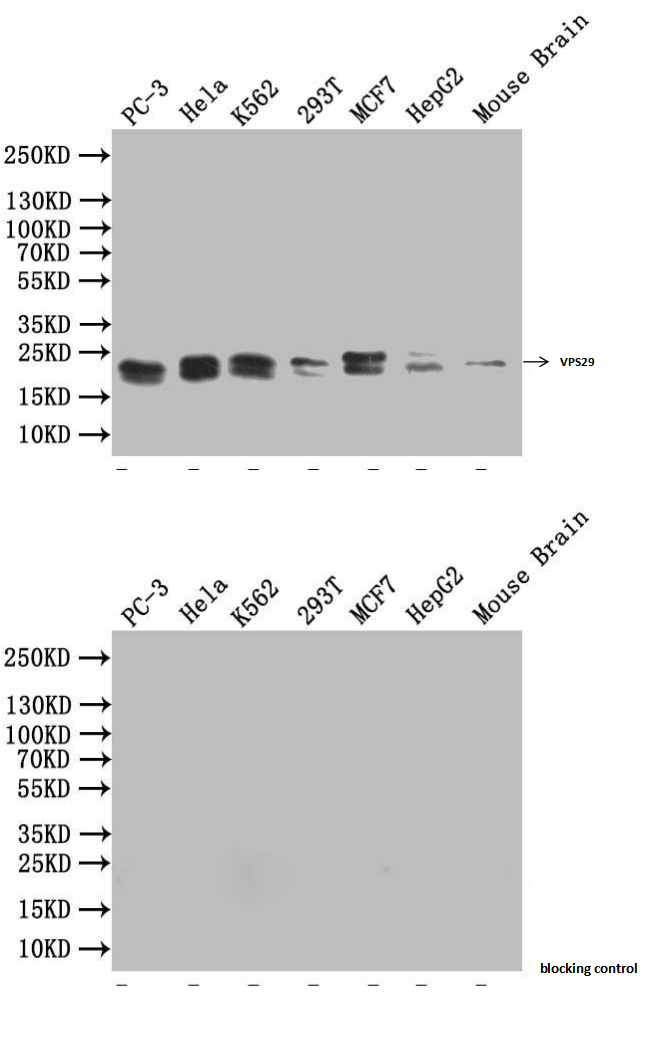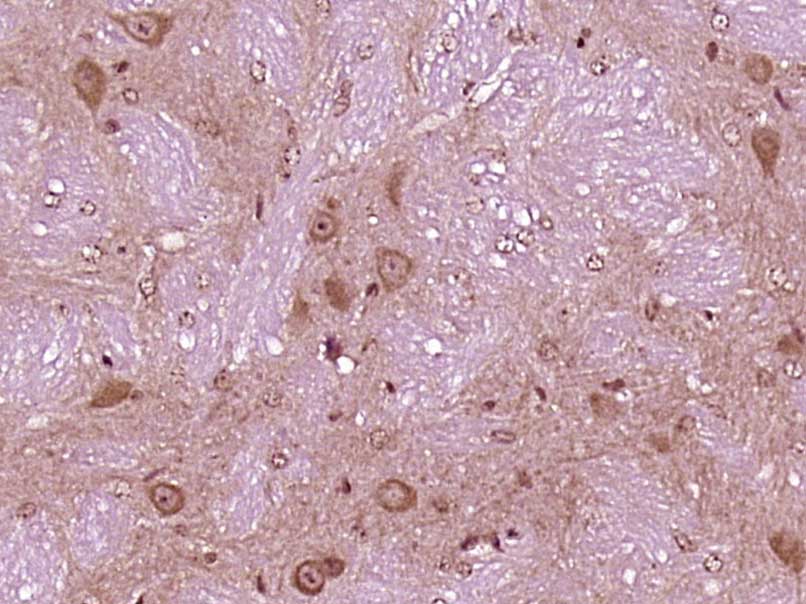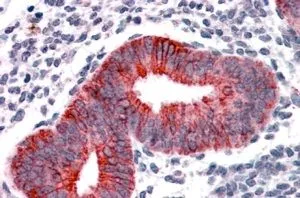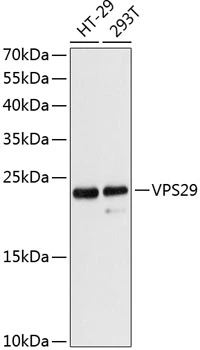
WB analysis of human spleen lysate using GTX10160 VPS29 antibody, C-term. Dilution : 0.1microg/ml Loading : 35microg protein in RIPA buffer
VPS29 antibody, C-term
GTX10160
ApplicationsWestern Blot
Product group Antibodies
TargetVPS29
Overview
- SupplierGeneTex
- Product NameVPS29 antibody, C-term
- Delivery Days Customer7
- Application Supplier NoteWB: 0.1-0.3microg/ml. *Optimal dilutions/concentrations should be determined by the researcher.Not tested in other applications.
- ApplicationsWestern Blot
- CertificationResearch Use Only
- ClonalityPolyclonal
- Concentration0.50 mg/ml
- ConjugateUnconjugated
- Gene ID51699
- Target nameVPS29
- Target descriptionVPS29 retromer complex component
- Target synonymsDC15, DC7, PEP11, vacuolar protein sorting-associated protein 29, PEP11 homolog, epididymis secretory sperm binding protein, hVPS29, retromer protein, vacuolar protein sorting 29 homolog, vacuolar sorting protein VPS29/PEP11, vesicle protein sorting 29, x 007 protein
- HostGoat
- IsotypeIgG
- Protein IDQ9UBQ0
- Protein NameVacuolar protein sorting-associated protein 29
- Scientific DescriptionThis gene belongs to a group of vacuolar protein sorting (VPS) genes that, when functionally impaired, disrupt the efficient delivery of vacuolar hydrolases. The protein encoded by this gene is a component of a large multimeric complex, termed the retromer complex, which is involved in retrograde transport of proteins from endosomes to the trans-Golgi network. This VPS protein may be involved in the formation of the inner shell of the retromer coat for retrograde vesicles leaving the prevacuolar compartment. Alternative splice variants encoding different isoforms and representing non-protein coding transcripts have been found for this gene. [provided by RefSeq, Aug 2013]
- Storage Instruction-20°C or -80°C,2°C to 8°C
- UNSPSC12352203
References
- Regulation of retromer recruitment to endosomes by sequential action of Rab5 and Rab7. Rojas R et al., 2008 Nov 3, J Cell BiolRead more








